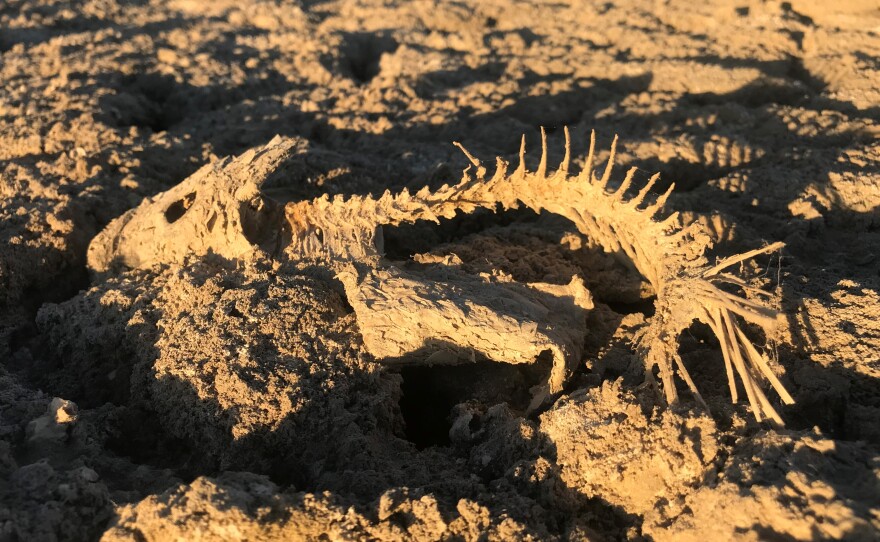The valley that is home to the Salton Sea sits below sea level. It has been flooded and dried multiple times on a historical geological scale. The current lake was born of a construction accident that pierced an irrigation canal in 1905. The damage was not repaired for 18 months, allowing the low-lying area to flood.

Lake levels are expected to drop at about a foot-and-a-half per year, exposing tens of thousands of acres of lake-bottom. Imperial County officials worry the land will dry out, and the dust will be picked up by desert winds. That could exacerbate air quality problems that are among the worst in the state.

The Salton Sea used to have a thriving sportfishing industry. Increasing salinity has pushed many of the lake’s aquatic species to the brink of survival. The collapse of the fisheries could also hurt birds that see this as a stopping point on the migratory path known as the Pacific Flyway.

Farming continues to be a major economic driver in the Imperial Valley and it will continue to provide water for the Salton Sea. However, the amount of water drained off farm fields is not nearly enough to keep the current lake level stable.

California officials hope to build shallow ponds that serve two purposes. The ponds would create wildlife habitat that would make the environment appealing for both fish and birds. The ponds would also cover exposed lakebed and control possible dust emissions.

The state has committed to spending $80 million on restoration. They hope to find another $300 million, some of that from a possible water bond initiative, for the first 10 years of the restoration effort. But funding for Salton Sea restoration remains as uncertain as the ecological future of California’s largest lake.

For more on the shrinking Salton Sea, read the full story: The Shrinking Salton Sea Endangers Region’s Health





